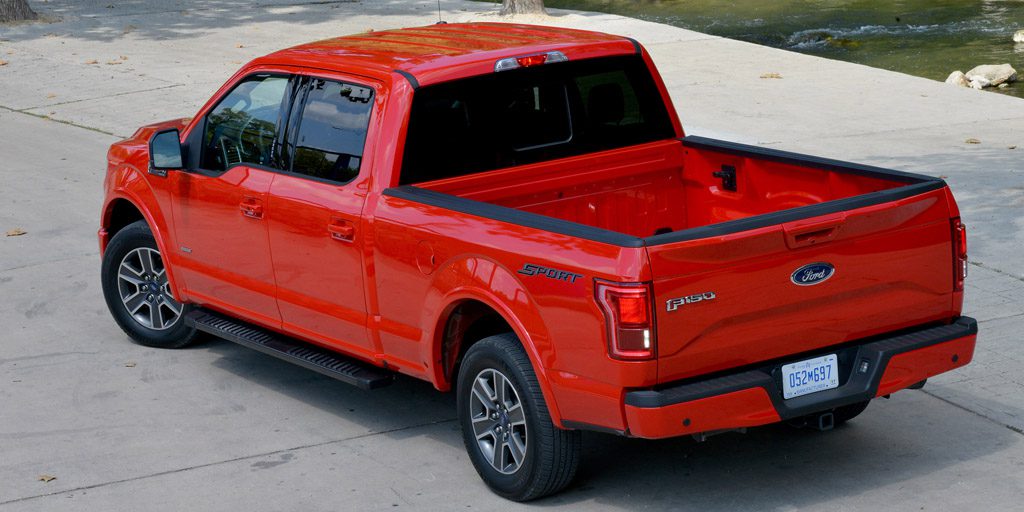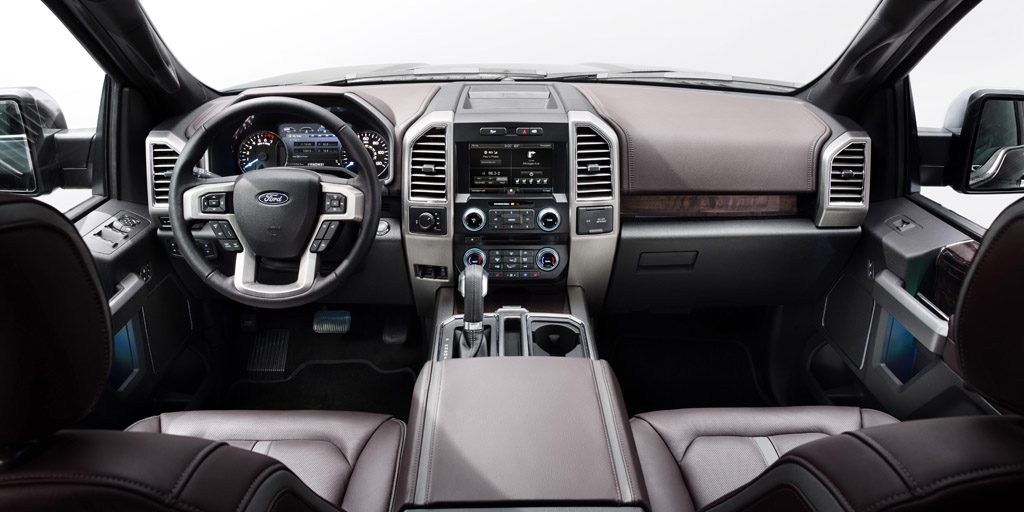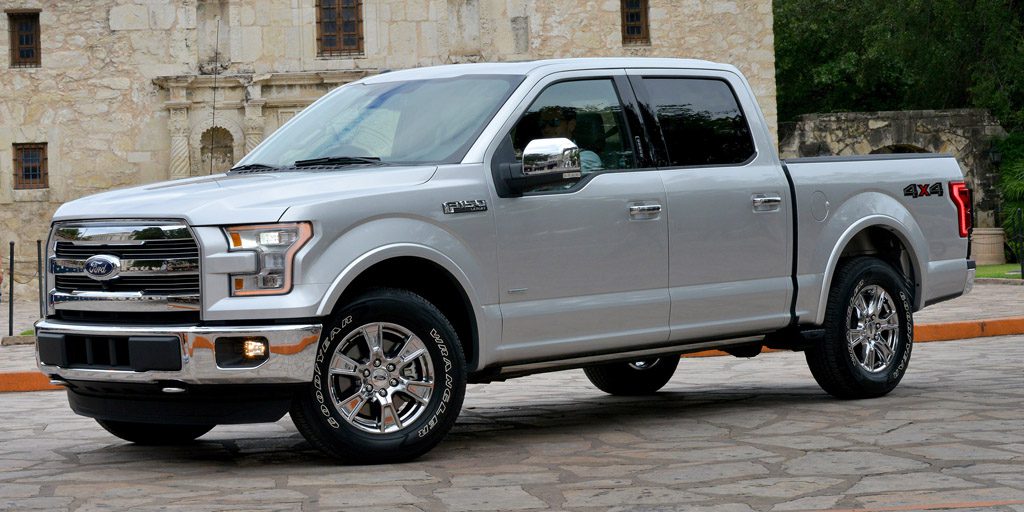| Large pickup truck; Built in USA |
|
|
| Good condition price range: $17,500 – $46,000* |

2015 Ford F-150

2015 Ford F-150

2015 Ford F-150

2015 Ford F-150
| Pros: |
|
| Cons: |
|
The lightweight body structure, high-tech available features, and impressive powertrain lineup help the F-150 feel like a truly cutting-edge pickup inside and out.
Overview
Ford redesigned its strong-selling F-150 full-size pickup for 2015, taking the bold step of switching to lightweight aluminum body panels in place of steel. The 2015 F-150 offered regular-, extended-, and crew-cab body configurations among XL, XLT, Lariat, King Ranch, and Platinum trim levels. The top engine option is a 385-hp 5.0-liter V8. Two EcoBoost turbocharged V6s—a 365-hp 3.5-liter and a 325-hp 2.7-liter—are also available. The base engine is a 282-hp 3.5-liter V6.
Yearly Updates
| 2016 F-150 The 2016 Ford F-150 gained a Pro Trailer Assist option that greatly simplifies backing up a trailer. Also new was an available SYNC 3 media control system that replaced MyFord Touch. A prep package for converting the 5.0-liter V8 to natural gas or propane was also available. |
| 2017 F-150 The off-road/performance-oriented Raptor returned to the Ford F-150 line for 2017. The 2017 Raptor replaced the previous V8 with a high-output, 450-horsepower version of Ford’s turbocharged 3.5-liter EcoBoost V6 linked to a 10-speed automatic transmission. Available in other F-150 models was a redesigned turbocharged 3.5-liter EcoBoost that develops 375 horsepower and was also mated to the 10-speed automatic transmission. |
| 2018 F-150 The Ford F-150 got a mid-cycle refresh for 2018 with revised styling, new features, new engines, and increased availability of the 10-speed automatic transmission. Pedestrian detection, autonomous emergency braking, adaptive cruise control, and WiFi hotspot were newly available. The base 3.5-liter V6 engine had been replaced by a 3.3-liter V6 that is rated at the same 282-horsepower as the previous 3.5-liter. The turbocharged 2.7-liter EcoBoost has been redesigned, but its 325-hp rating was also unchanged. The 5.0-liter V8 was revised and horsepower increased from 285 to 295. A 3.0-liter Power Stroke turbodiesel V6 was added during the model year. All engines (except the base 3.3-liter V6 which has a 6-speed automatic) were paired with a 10-speed automatic transmission. All 2018 F-150s had fuel-saving stop/start technology. |
| 2019 F-150 The Ford F-150 had a few upgrades after 2018’s mid-cycle refresh. The 450-hp Raptor engine was newly standard in Limited. Raptor got electronically controlled Fox shock absorbers and Trail Control, a low-speed cruise control that adjusts power and braking to each wheel at speeds between 1-20 mph. |
